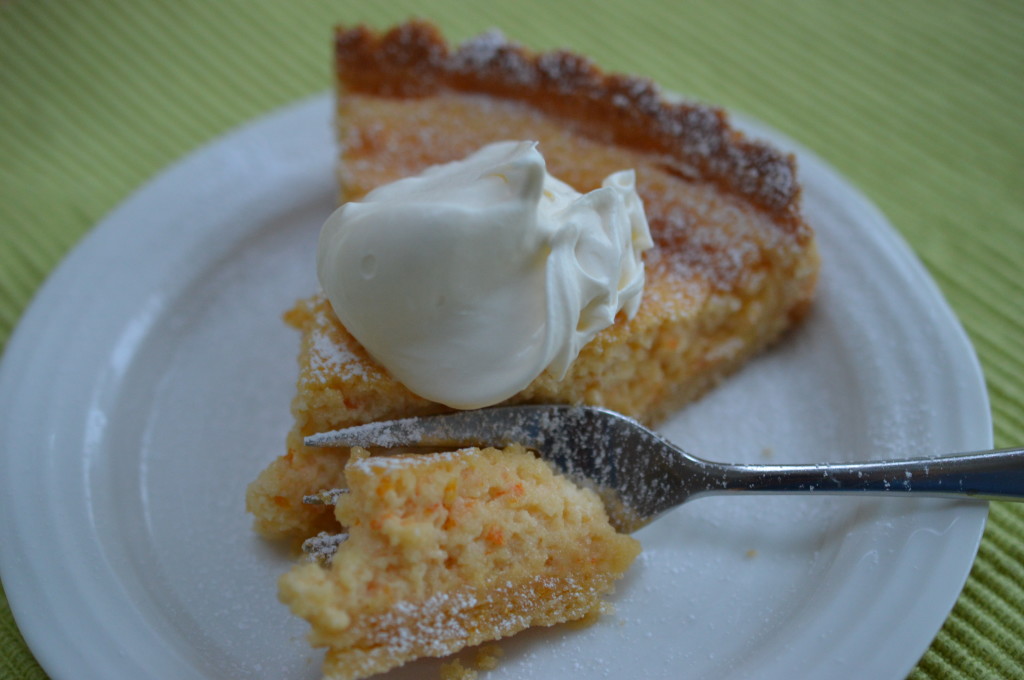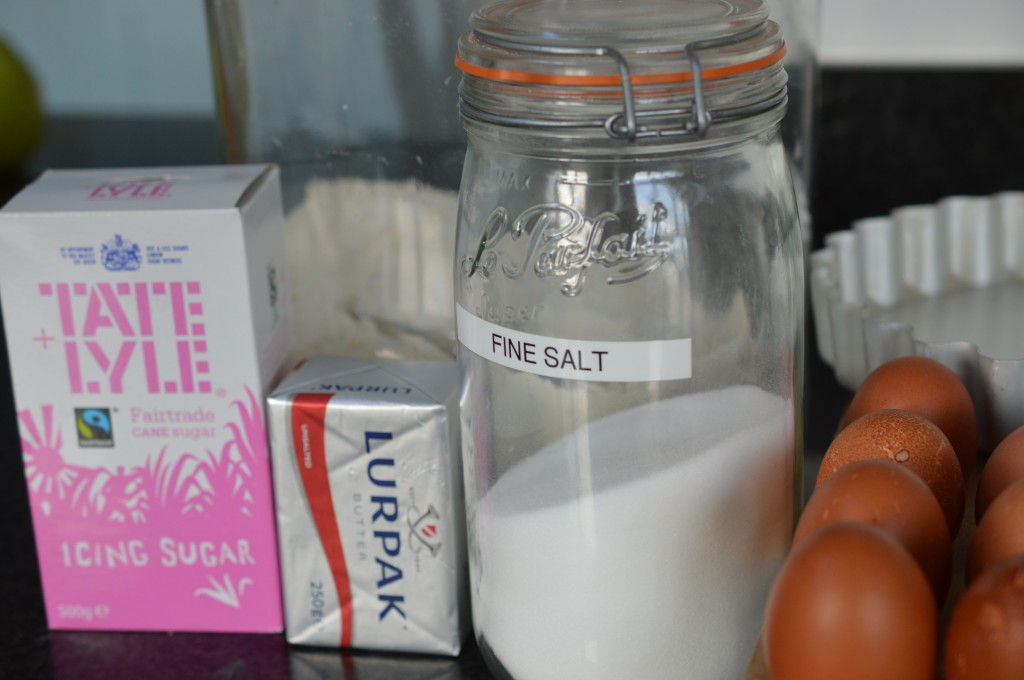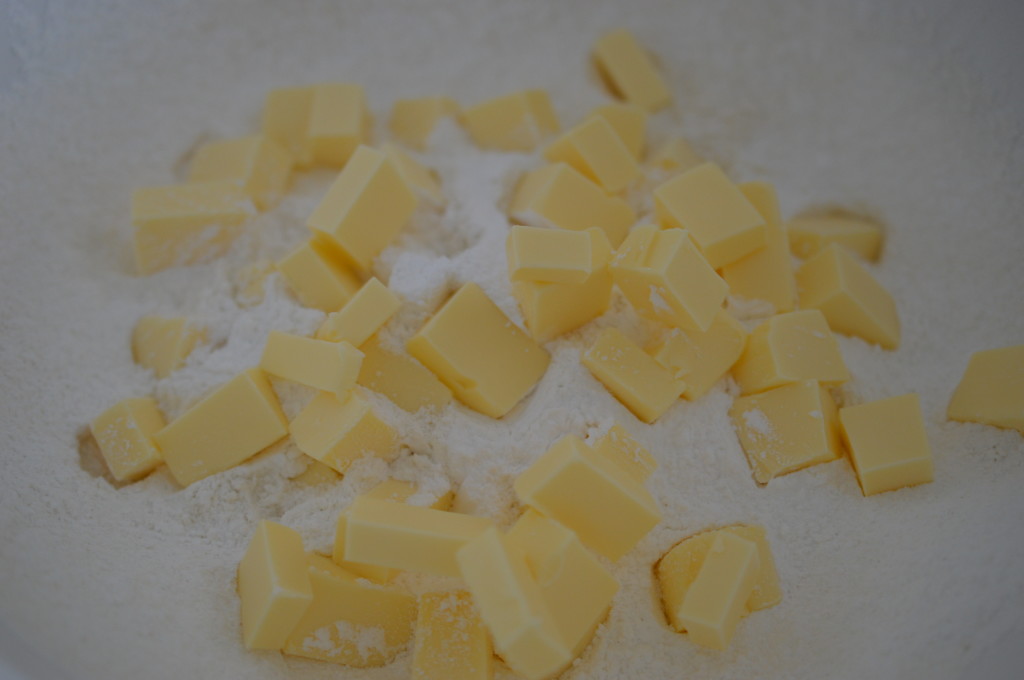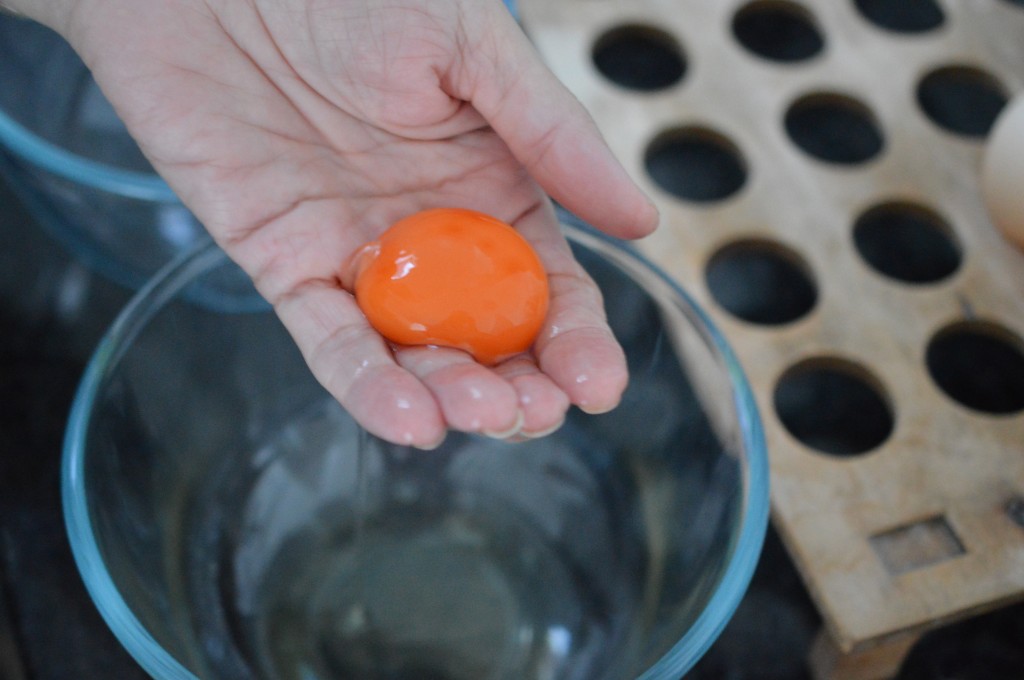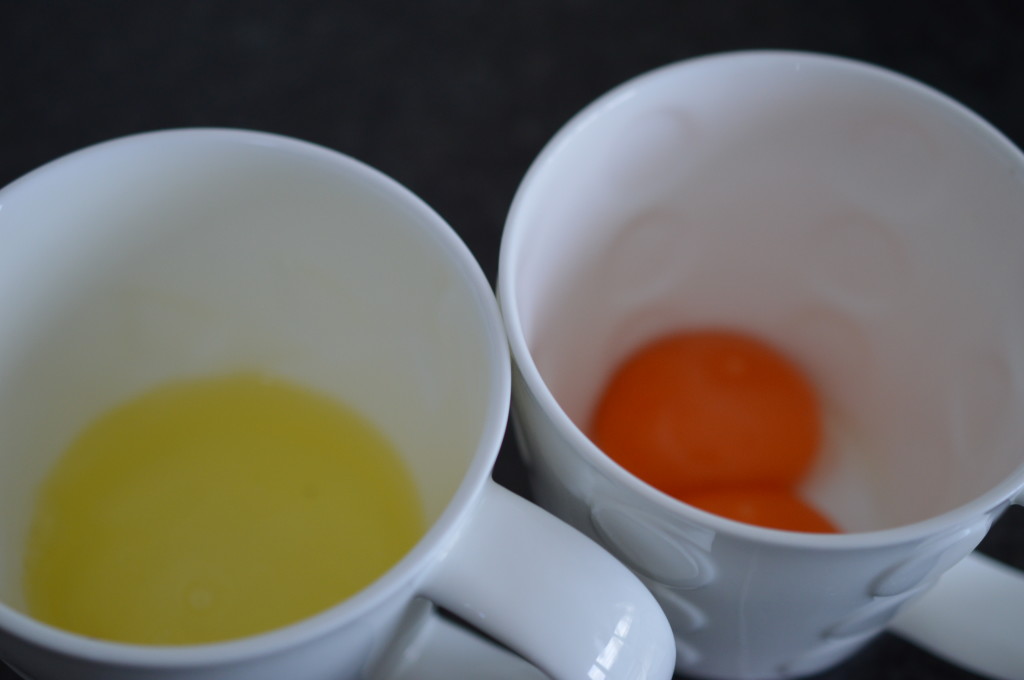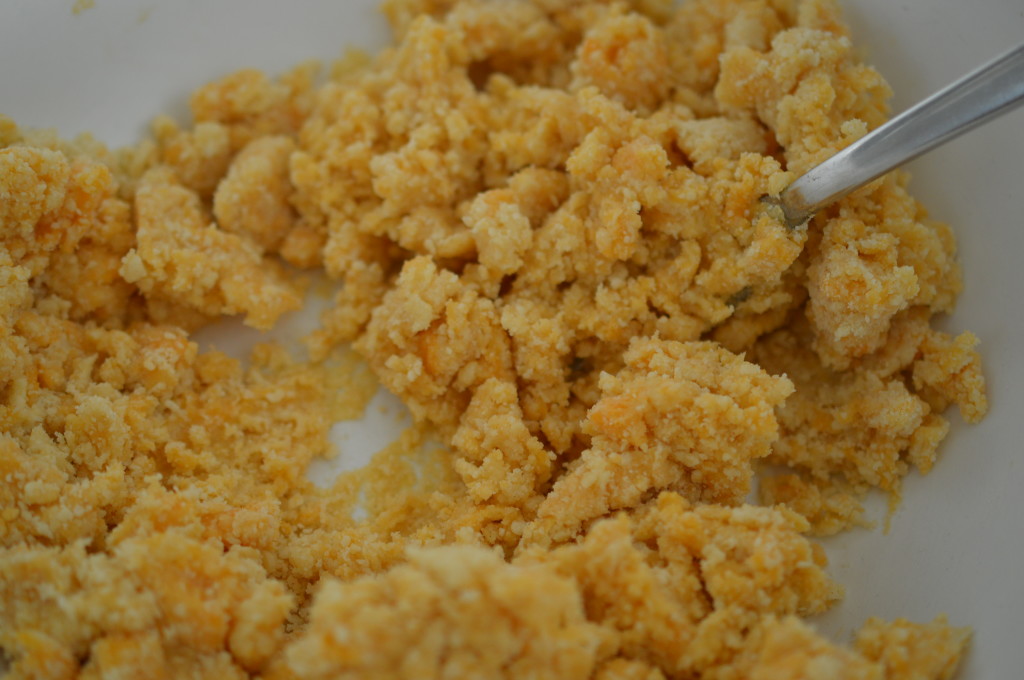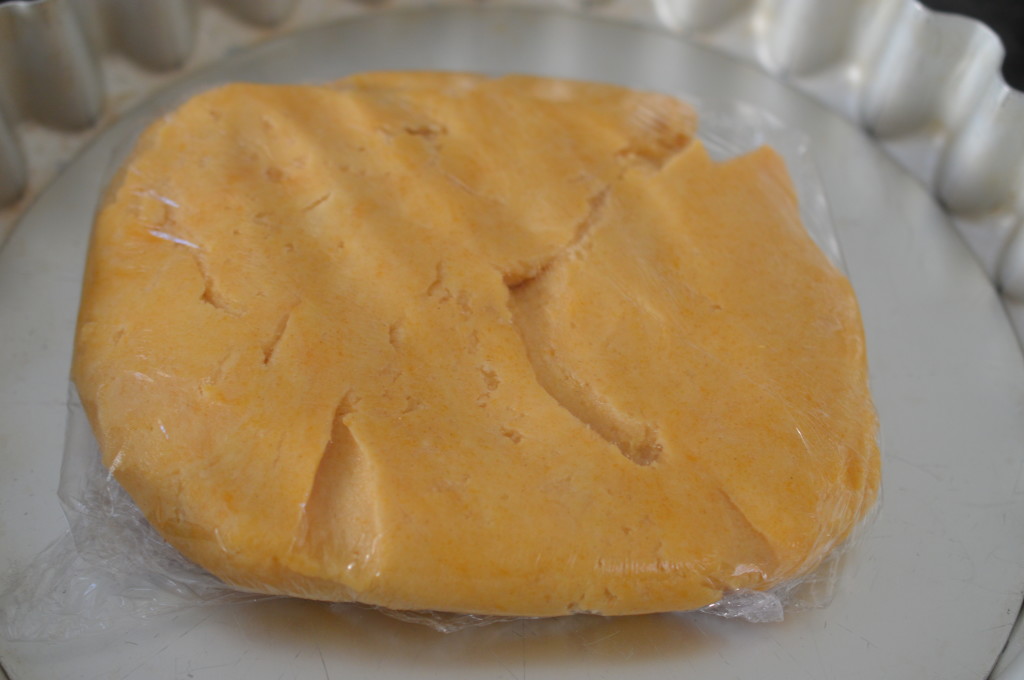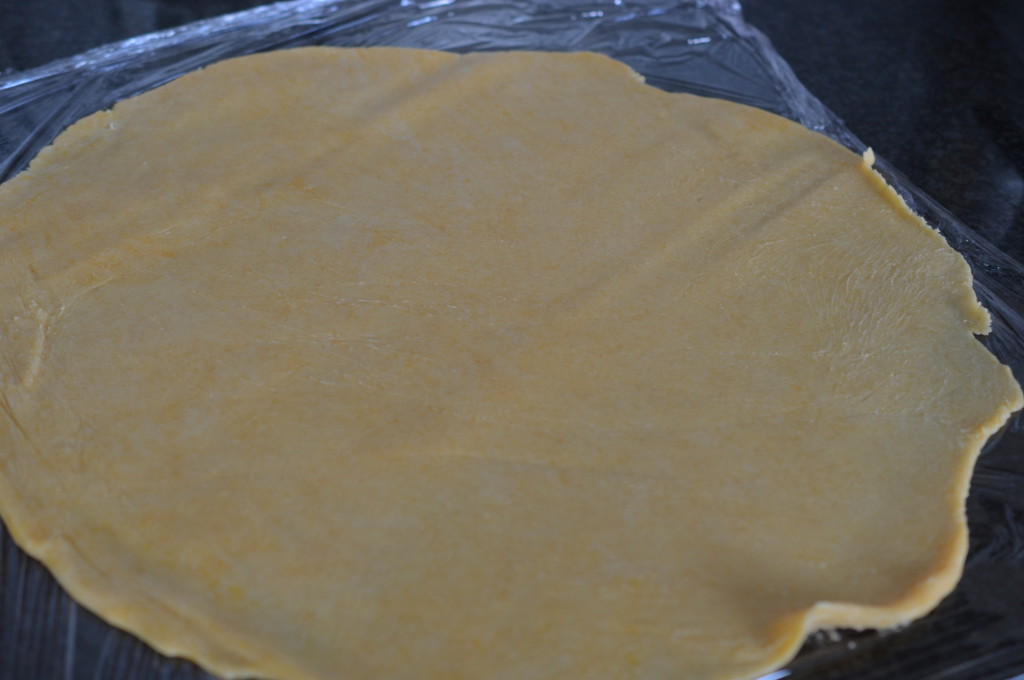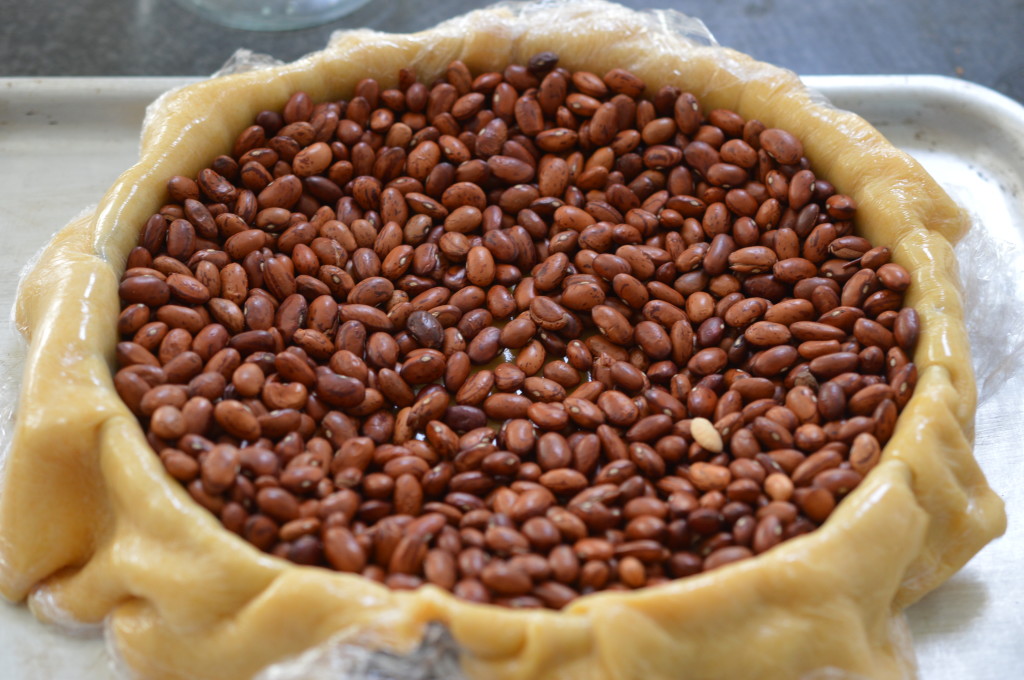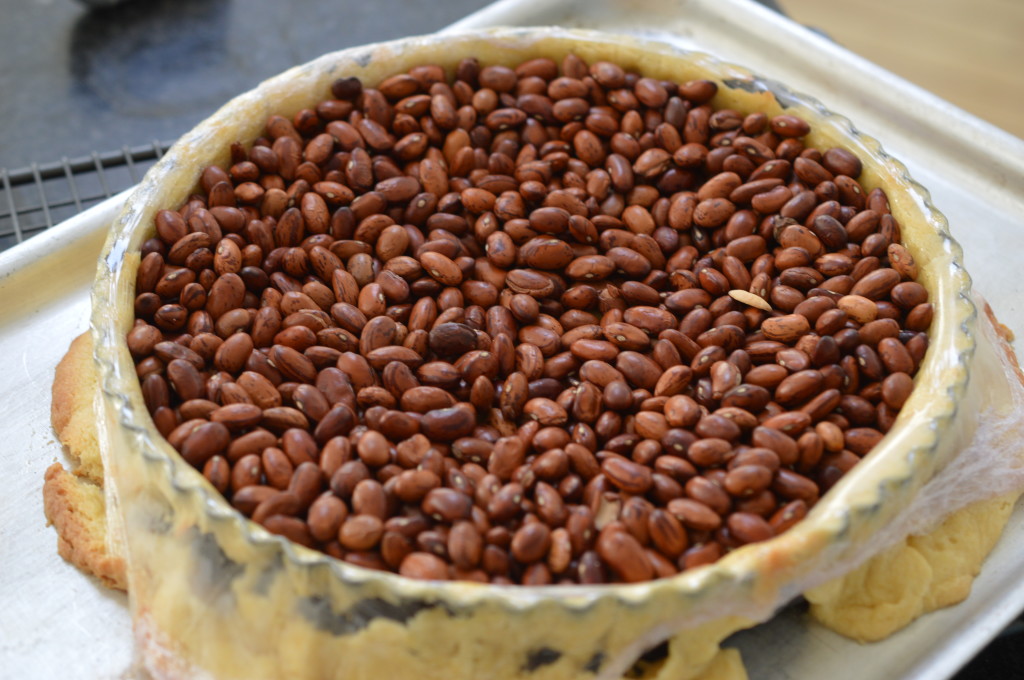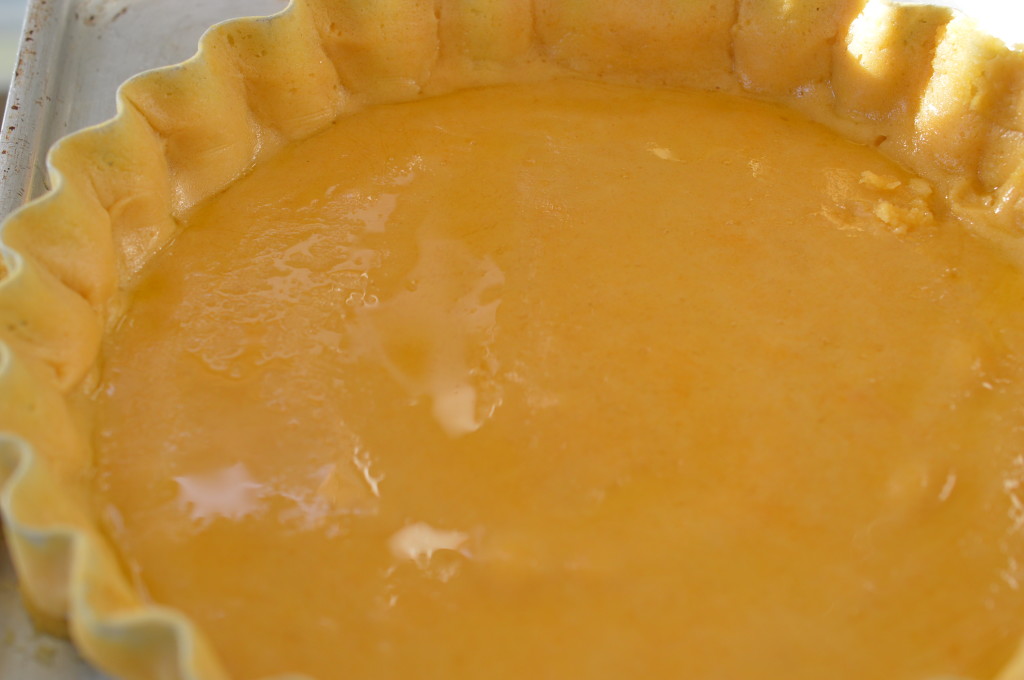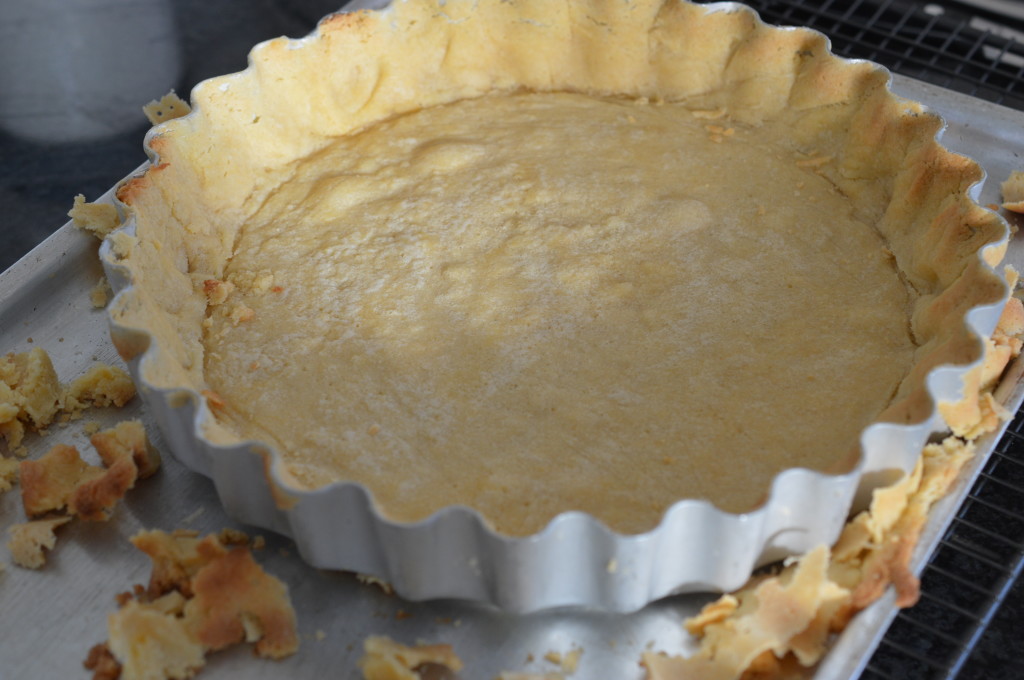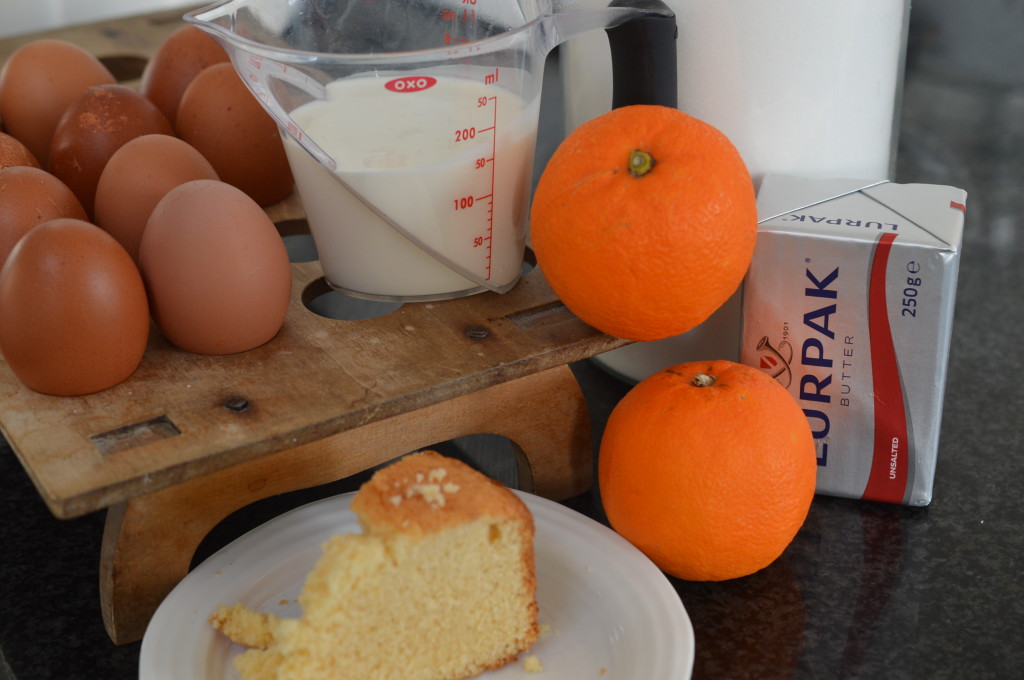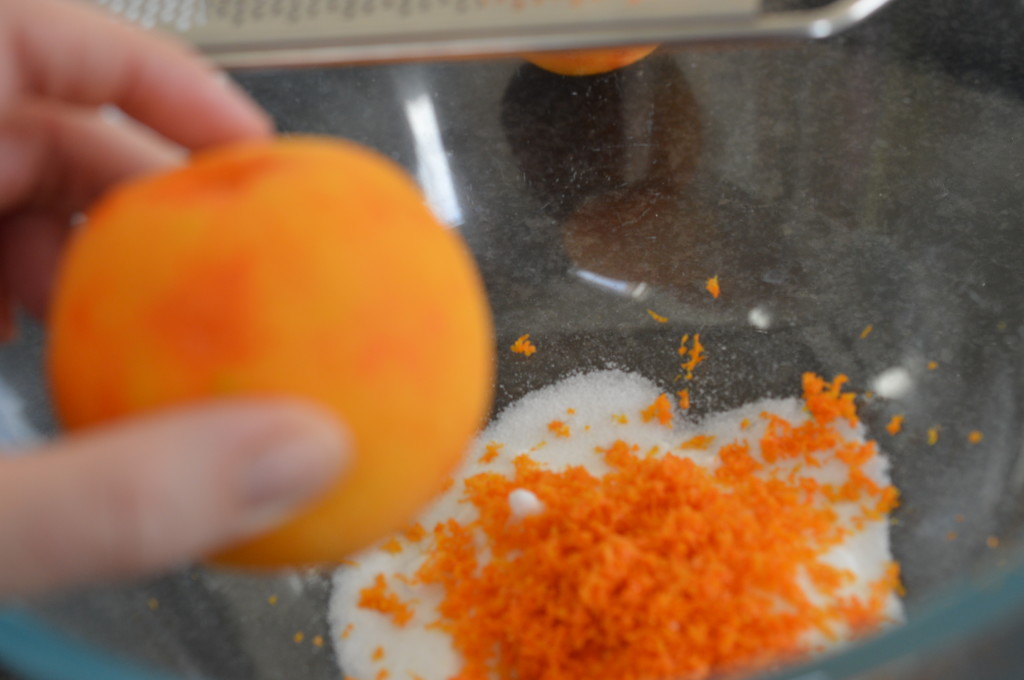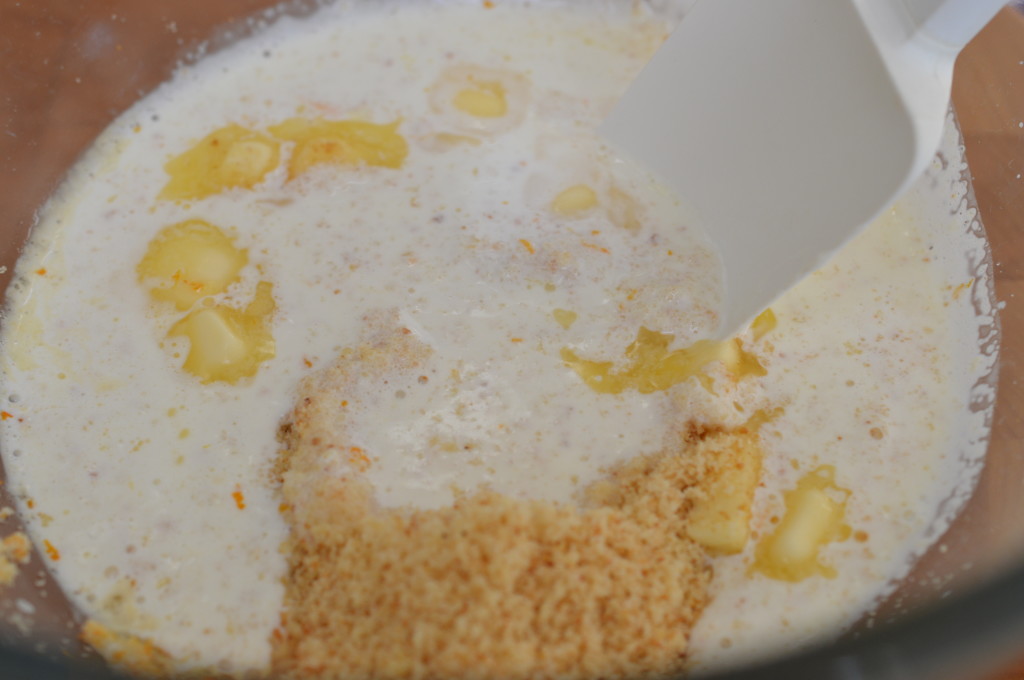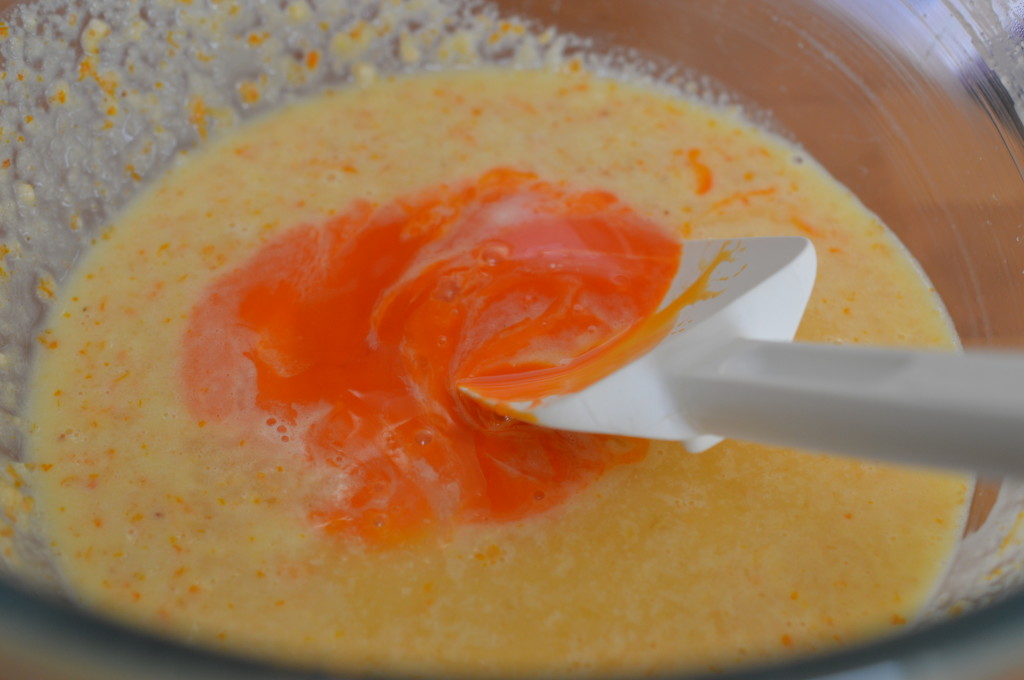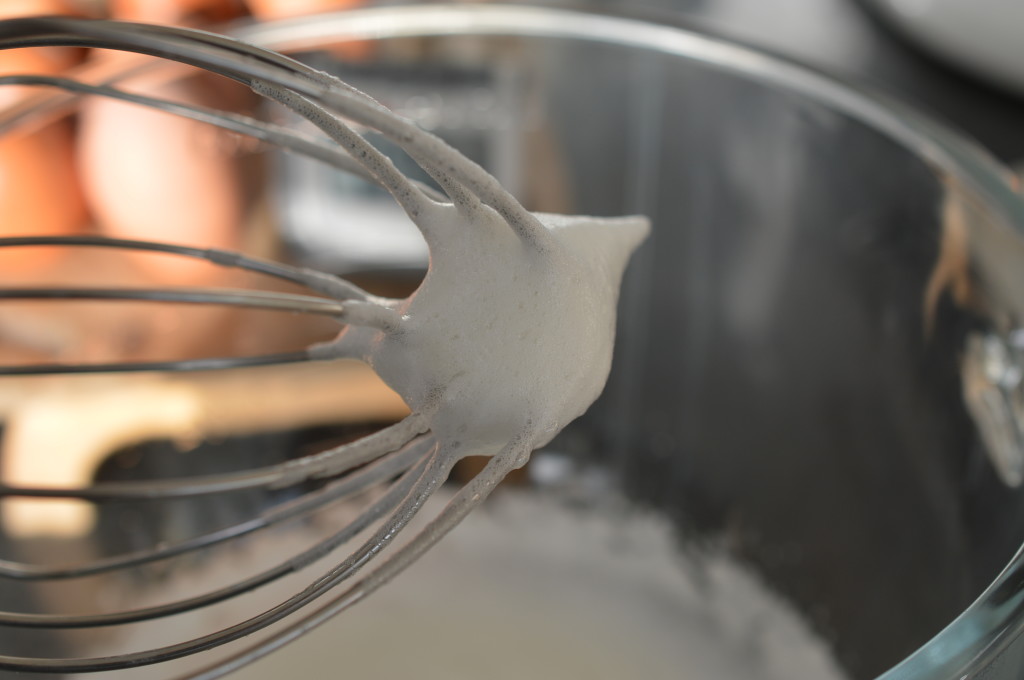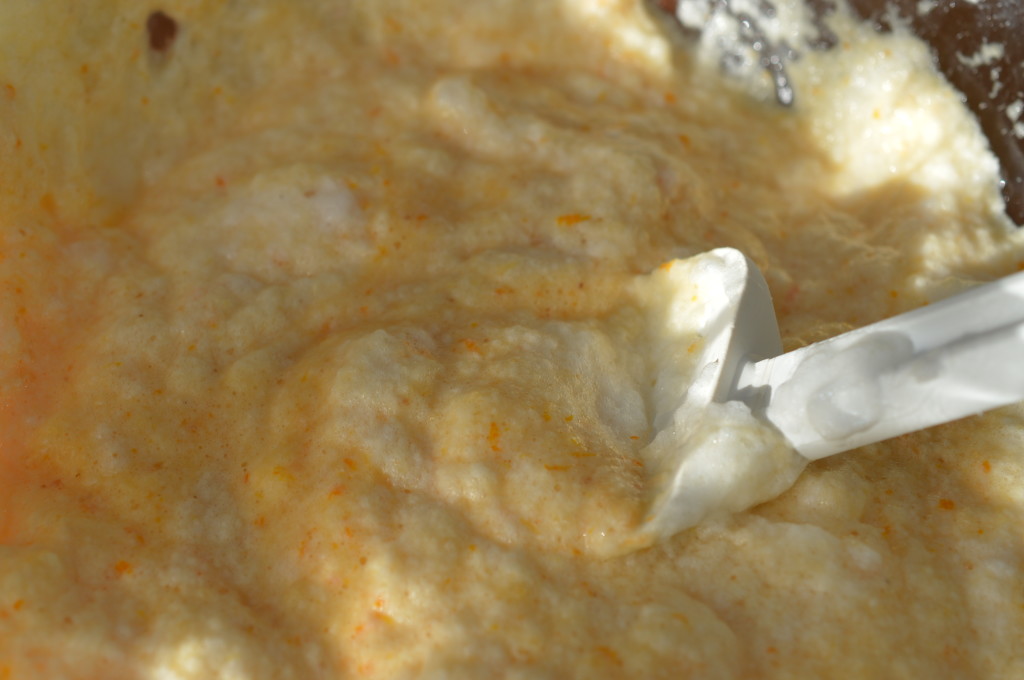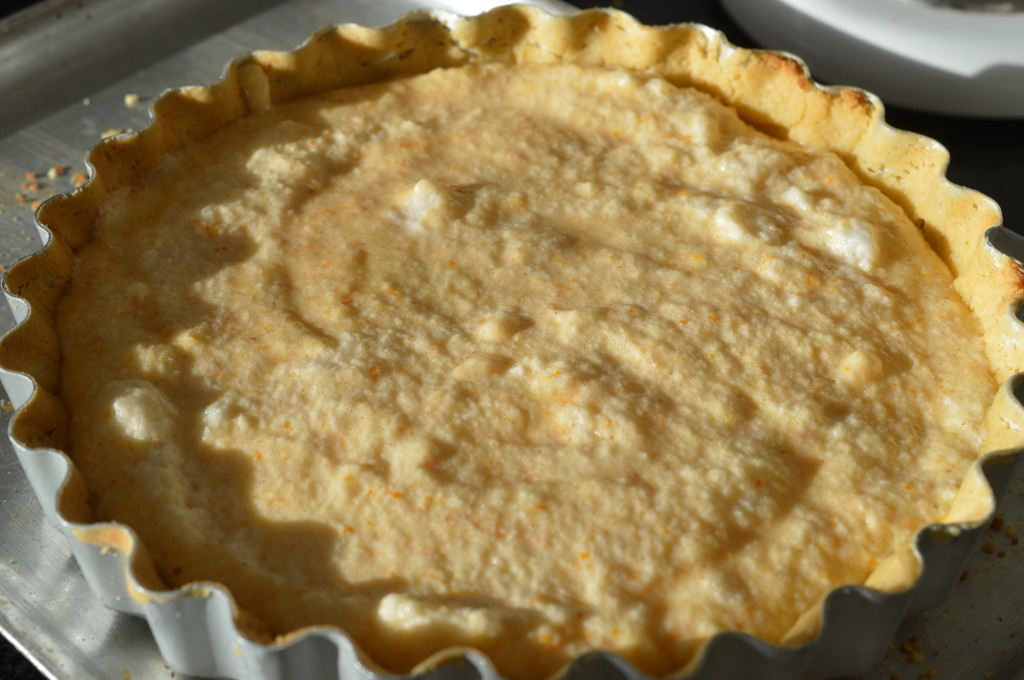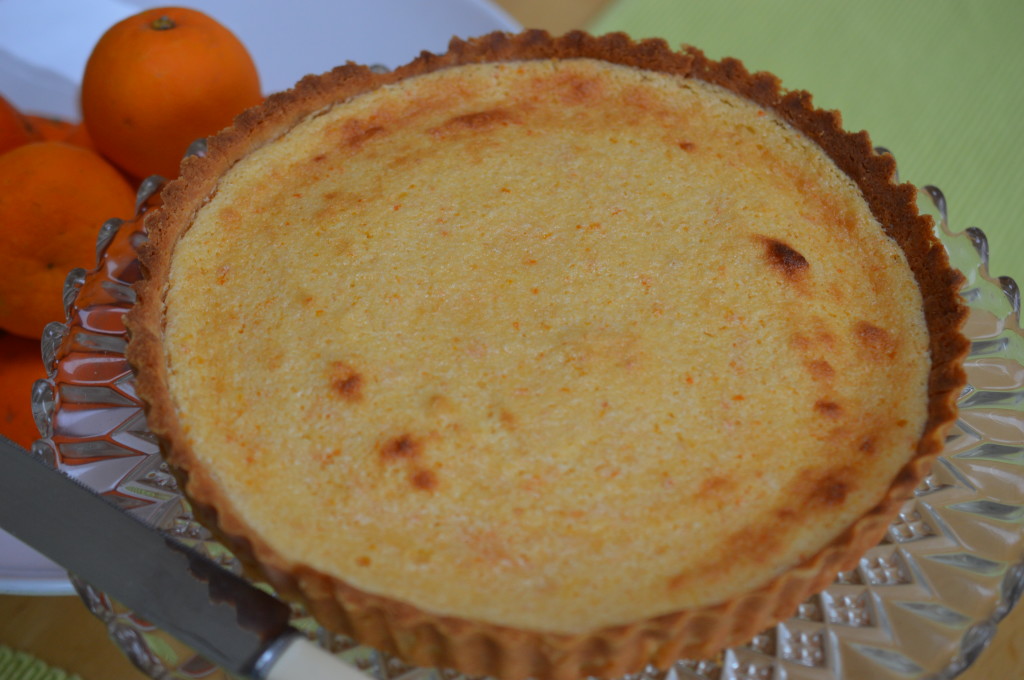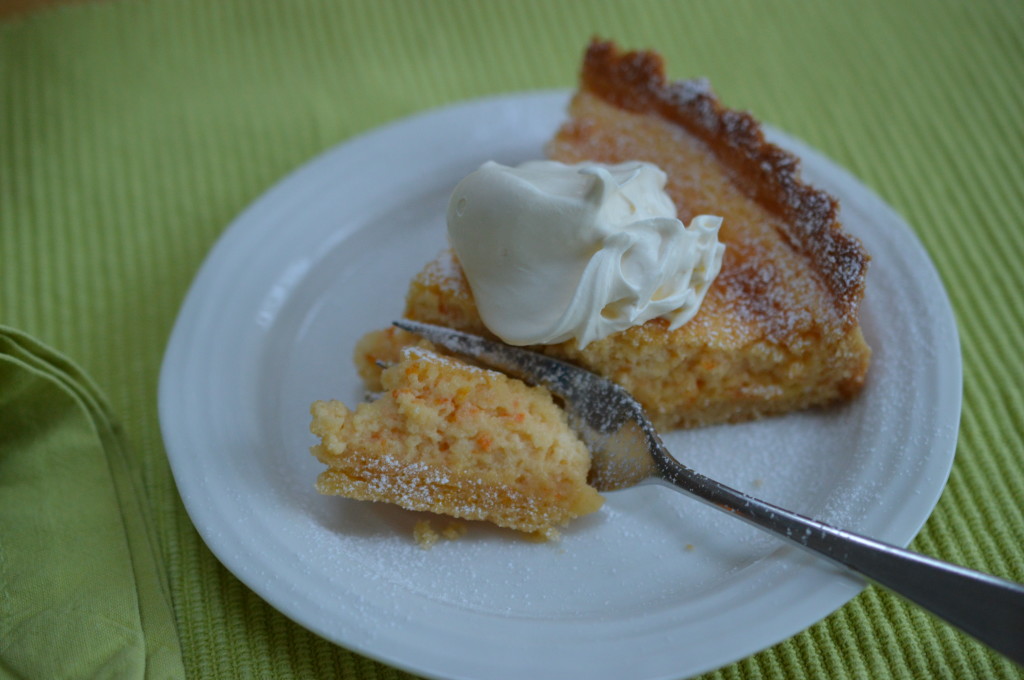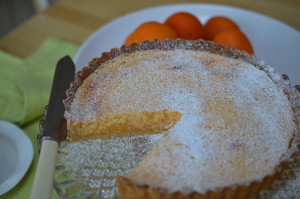Seville Orange Tart
The Indian name for a Seville orange is, apparently, ‘narayam’ which means ‘perfume within’. You’ve got to love that. Arab traders are thought to have brought them to Europe and groves were established around Seville in Andalusia, which is how they come by their name.
They arrived in Britain centuries before their sweeter cousins and there are any number of fun things you can do with them apart from making marmalade.
I found this recipe in Sara Paston-Williams’s book on ‘Puddings’ for the National Trust. I don’t make it often, but that’s one of the things I particularly like about it. There’s something appealing about a truly seasonal fruit.
It starts with a sweet pastry case. ‘Sweet’ is a good idea here because the Seville orange is a bitter fruit. It’s a little tricky to handle, but worth the effort.
Sieve the flour, salt and icing sugar together. At this point, you have a choice. You could place the bowl in a chest freezer with a view to blitzing the lot together in the food processor. This will be a more attractive option if your freezer isn’t housed in an outbuilding at the end of the garden. In my case, I don’t have that excuse but I do have an almost pathelogical dislike of cleaning the blasted food processor …
So, assuming you are going to do as I do.
Rub the butter into the flour and icing sugar.
Whichever method you’ve opted for you need to separate two eggs.
Save the egg whites for the filling and use the yolks for the pastry.
I lightly beat the egg yolks and, using a blunt knife to mix, add them to the butter/flour/icing sugar.
The food processor method is to place the now super-cold contents of your bowl into the mixer. Pulse. Then add the egg yolks. Pulse again.
Whatever route you’ve taken you will end up with a soft dough. Knead briefly and wrap in cling film. Pop it into the fridge. There really is no skipping this stage. Give it time. 30 minutes minimum. Overnight is fine.
I like to melt butter to grease my 23cm/9″ flan tin and let that chill in the fridge too.
Before you take the pastry dough out of the fridge, get your oven up to temperature. 200ºF/400ºC/Gas Mark 6.
It really is worth rolling out between two sheets of cling wrap as it makes it so much easier to handle.
Remove the top sheet of cling film and transfer the pastry to the greased flan tin.
This feels counter intuitive to me but, as long as you are using cling film and not food wrap, there’s no need to peel the final sheet of cling film off the pastry. You’ll be glad of that! The pastry softens really quickly. Pour in your baking beans. Take care to bank them up against the sides of the tin.
There’s an alternative here, too. The pastry is so soft the baking beans will leave indentations. If that’s a problem to you, use flour instead of the beans.
Ten minutes later, it looks like this.
Remove the cling film and the beans, control your panic over how greasy it looks. This is because this pastry has a seriously high butter content. Return it to the oven to cook for a further ten minutes.
You’re not looking for the pastry case to have any colour. Cut away the excess pastry to give a neat finish.
Now it’s on to the filling. Spot the madeira cake! Whiz the cake slice into crumbs. Reduce the oven temperature to 180ºC/350ºF/Gas Mark 4.
If you’re unsure whether your Seville Oranges are waxed, you’ll need to run under boiling water and give them a scrub. (I wish they’d stop doing that.) Weigh out 55g/2oz caster sugar and add the zest of both your oranges.
Mix together.
Warm the single cream (or full-fat milk if you’re feeling sanctimonious) and add that together with the cake crumbs and cubed butter. Stir until the butter has melted in the warmed cream.
Add the egg yolks and the juice of both the Seville Oranges.
Whisk the egg whites until it stands in soft peaks.
Fold the egg whites into the orange mixture. Think soufflé and be gentle.
Scoop the filling into the pastry case and bake for 30 minutes until the top is golden brown.
Warm or cold.
Serve with cold cream.
Eat.
(discovered in Sara Paston-Williams ‘Good Old-Fashioned Puddings’ for the National Trust.
23cm/9″ flan tin.
For the Pastry:
- 175g/6oz plain flour
- pinch of salt
- 85g/3oz icing sugar
- 150g/5½oz unsalted butter, cubed
- 2 egg yolks, beaten
Sieve the flour, salt and icing sugar into a bowl and rub in the butter.
Mix in the egg yolks to form a soft dough. Wrap in cling film and chill for a minimum of 30 minutes.
Preheat the oven. Grease the flan tin with butter.
Roll out the pastry between two sheets of cling film. Remove the top sheet and flip the pastry into the flan tin. Leaving the remaining cling film sheet in place, lightly press the pastry against the sides and leave the overhanging pastry. Fill with baking beans.
Bake ‘blind’ for 10 minutes.
Remove the beans and cling film and return to the oven for a further 10 minutes. Reduce the oven temperature to 180ºC/350ºF/Gas Mark 4.
For the Filling:
- Zest and juice of 2 Seville Oranges
- 55g/2oz caster sugar
- 55g/2oz Madeira Cake Crumbs
- 25g/1oz butter, cut into small pieces
- 150ml/¼ pint single cream or full-fat milk
- 2 egg, separated
Mix the caster sugar with the orange zest, then add the butter and cake crumbs.
Warm the cream and pour over the mixture. Stir until the butter has melted. Add the egg yolks and the orange juice.
Whisk the egg whites until they reach the ‘soft peak’ stage, then fold into the orange mixture.
Transfer to the pastry case and cook for 30 minutes, or until the filling is golden brown.
Serve warm or cold.
Eat.
